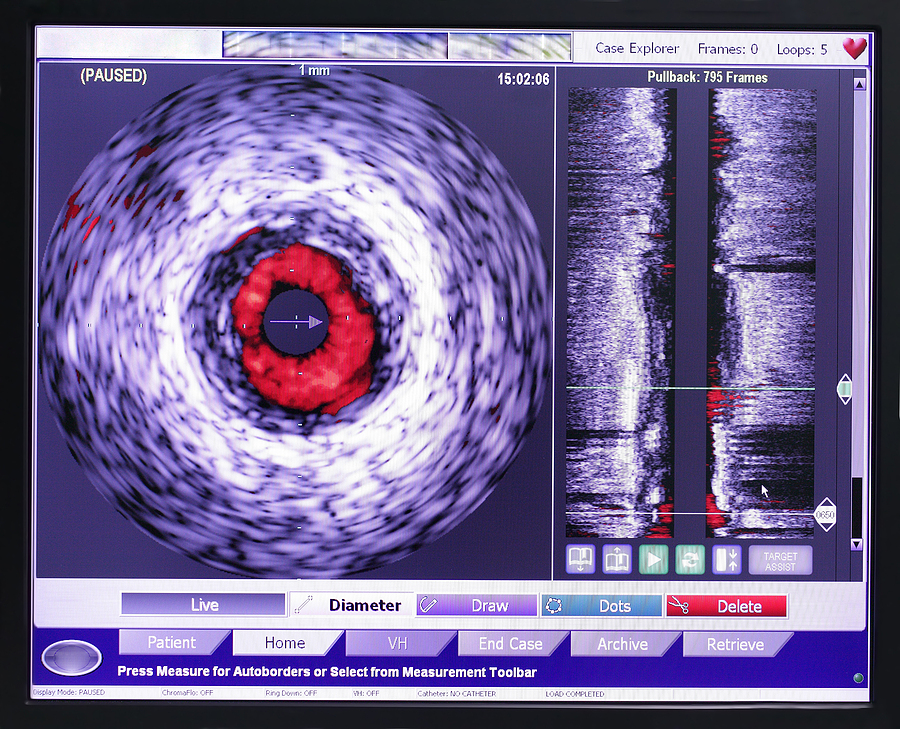Home > Services> Percutaneous Coronary Intervention> Intravascular Ultrasound
Intravascular Ultrasound

Intravascular ultrasound (IVUS) is a diagnostic test. This test uses sound waves to see inside blood vessels. It is useful for evaluating the coronary arteries that supply the heart.
A tiny ultrasound wand is attached to the top of a thin tube. This tube is called a catheter. The catheter is inserted into an artery in your groin area and moved up to the heart. It is different from conventional duplex ultrasound. Duplex ultrasound is done from the outside of your body by placing the transducer on the skin.
A computer measures how the sound waves reflect off blood vessels, and changes the sound waves into pictures. IVUS gives the health care provider a look at your coronary arteries from the inside-out.
IVUS is almost always done during a procedure.
Angiography gives a general look at the coronary arteries. However, it can’t show the walls of the arteries. IVUS images show the artery walls and can reveal cholesterol and fat deposits (plaques). Buildup of these deposits can increase your risk for a heart attack.
IVUS has helped providers understand how stents become clogged. This is called stent restenosis.
IVUS is commonly done to make sure a stent is correctly placed during angioplasty. It may also be done to determine where a stent should be placed.
IVUS may also be used to:
- View the aorta and structure of the artery walls, which can show plaque buildup
- Find which blood vessel is involved in aortic dissection
There is a slight risk for complications with angioplasty and cardiac catheterization. However, the tests are very safe when done by an experienced team. IVUS adds little additional risk.
Risks of anesthesia and surgery in general are:
- Reactions to medicines
- Breathing problems
- Bleeding, blood clots
- Infection
Other risks include:
- Damage to a heart valve or blood vessel
- Heart attack
- Irregular heartbeat (arrhythmia)
- Kidney failure (a higher risk in people who already have kidney problems or diabetes)
- Stroke (this is rare)
After the test, the catheter is completely removed. A bandage is placed on the area. You will be asked to lie flat on your back with pressure on your groin area for a few hours after the test to prevent bleeding.
If IVUS was done during:
- Cardiac catheterization: You will stay in the hospital for about 3 to 6 hours.
- Angioplasty: You will stay in the hospital for 12 to 24 hours.
The IVUS does not add to the time you must stay in the hospital.
